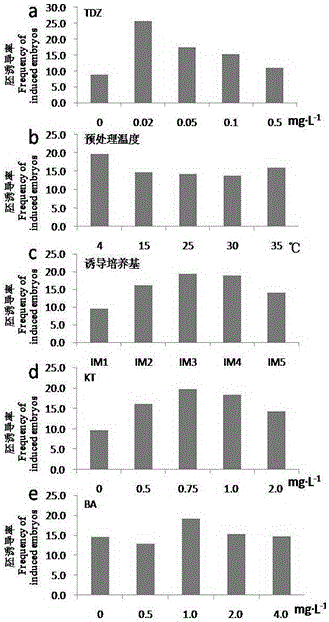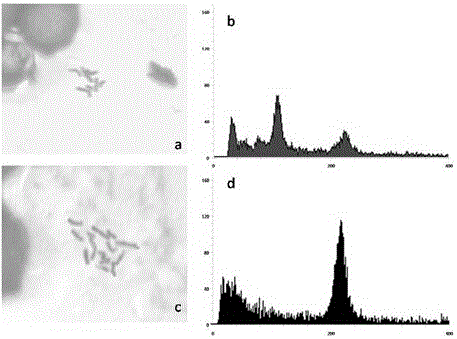A method for obtaining regenerated cucumber plants by inducing gynogenesis through culture of unfertilized ovules
A technology of gynogenesis and non-fertilization, which is applied in the field of plant tissue culture, can solve the problems that embryoid bodies and regenerated plants have not been seen, the research and development of haploids are limited, and the chromosome ploidy of regenerated plants is mixed.
- Summary
- Abstract
- Description
- Claims
- Application Information
AI Technical Summary
Problems solved by technology
Method used
Image
Examples
Embodiment Construction
[0044] Materials and Methods
[0045] 1.1 Test material
[0046] The experimental materials used in this study are the F1 generation prepared from the European greenhouse type cucumber 65G as the female parent and the North China Mici type cucumber 228 as the male parent, provided by the cucumber research group of the Vegetable and Flower Research Institute of the Chinese Academy of Agricultural Sciences.
[0047] 1.2 Induction culture
[0048] Select female flowers 1-2 days before flowering, wash with running water and remove thorn tumors on the surface of the ovary, disinfect with 75% ethanol on the ultra-clean workbench for 30 seconds, then disinfect in 6.5% sodium hypochlorite solution for 15 minutes, rinse with sterile water repeatedly for 4 —5 times, blot the surface moisture with sterile filter paper, do not cut the ovary, and inoculate the complete ovary on the basis of Murashige and Skoog's medium (Murashige T. and Skoog F., 1962) plus TDZ pre-culture Preliminary in...
PUM
 Login to View More
Login to View More Abstract
Description
Claims
Application Information
 Login to View More
Login to View More - R&D
- Intellectual Property
- Life Sciences
- Materials
- Tech Scout
- Unparalleled Data Quality
- Higher Quality Content
- 60% Fewer Hallucinations
Browse by: Latest US Patents, China's latest patents, Technical Efficacy Thesaurus, Application Domain, Technology Topic, Popular Technical Reports.
© 2025 PatSnap. All rights reserved.Legal|Privacy policy|Modern Slavery Act Transparency Statement|Sitemap|About US| Contact US: help@patsnap.com



